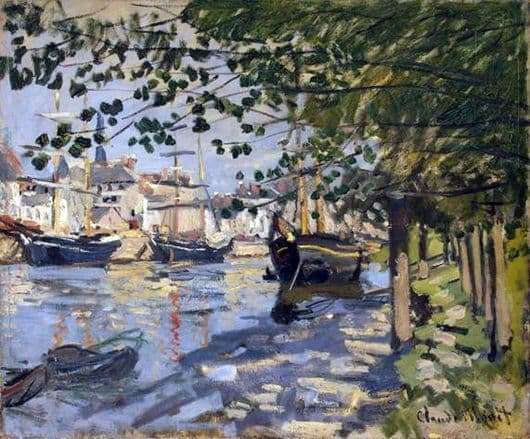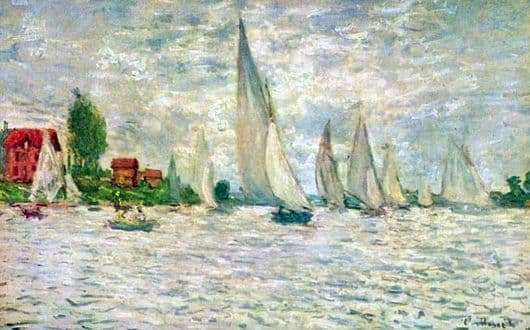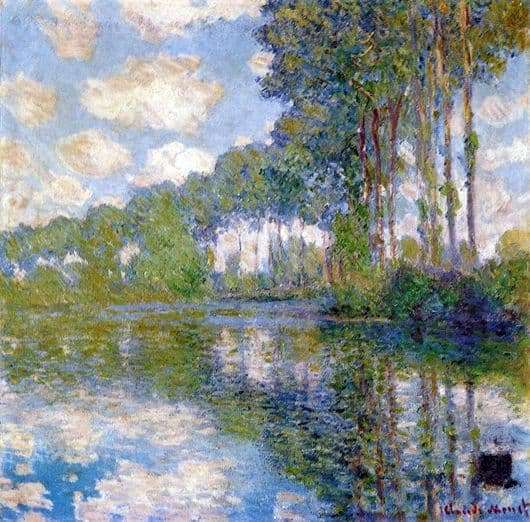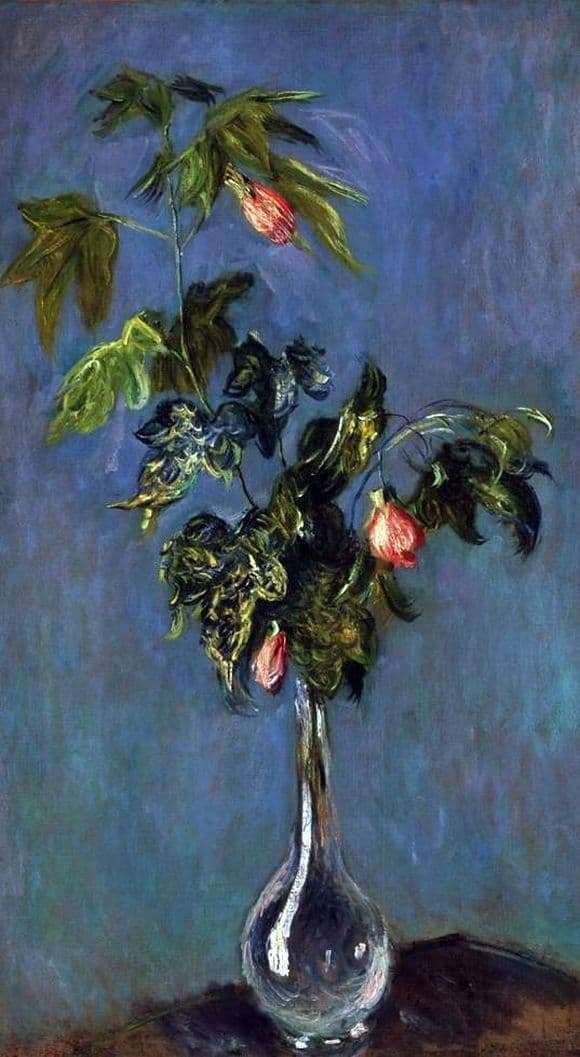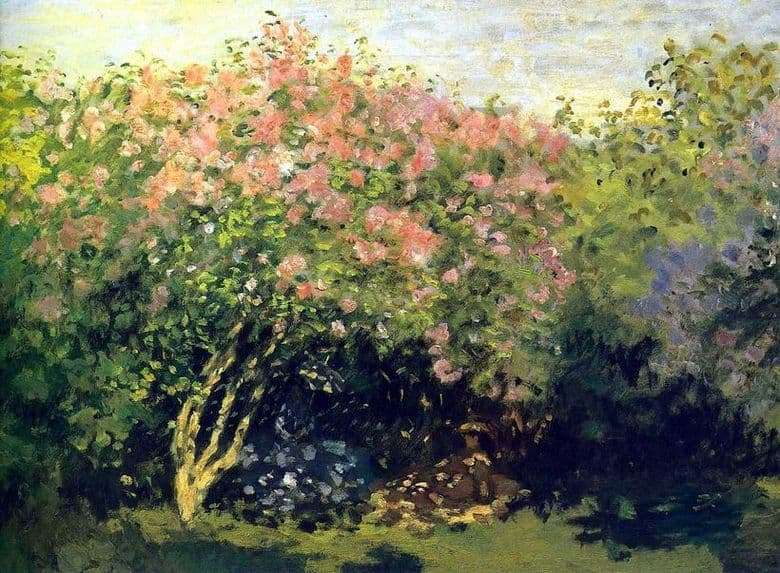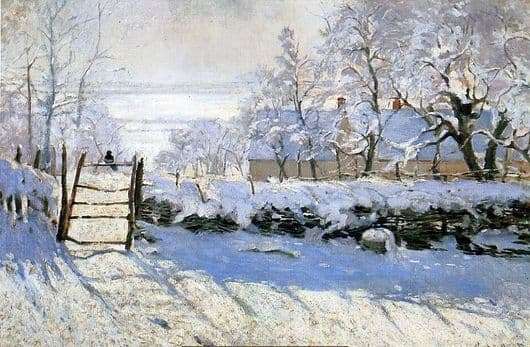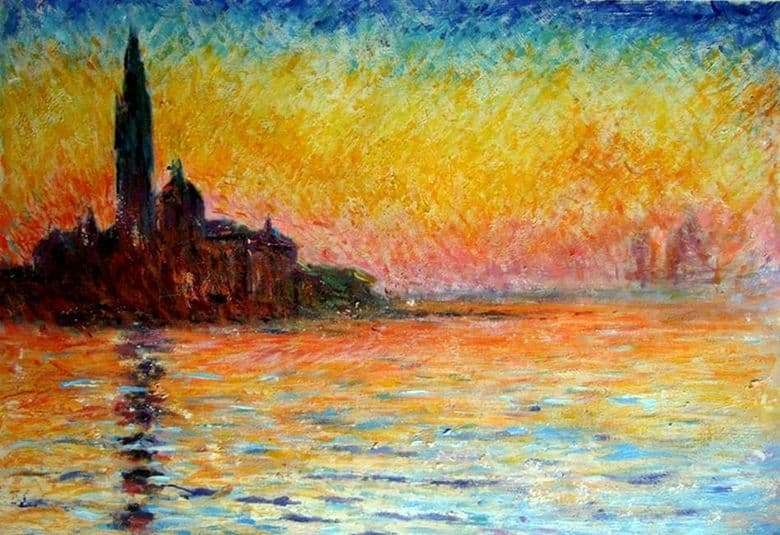
Claude Monet – one of the most famous French painters, who created his works in the genre of impressionism. The main goal of impressionist artists was to convey the beauty of the surrounding world in its continuous variability. Thanks to a whole arsenal of special methods and techniques of painting, the masters managed to convey the emotional-sensual side of the image, reflecting the immediate impression of what they saw. On account of K. Monet many of the masterpieces of impressionism, one of them – the painting “Seine Shore”, written in 1880 Of Paris. Inspired by the surrounding nature, Monet began to spend a lot of time in the village.
The result of his creative research was a lot of river landscapes, one of the most prominent examples of which is the “Seine Coast”. The canvas depicts a summer afternoon. The fast current of the Seine reflects the weightless clouds. The low river bank is covered with wild flowers that visually merge into one yellow-green grassy sea. The painting “The Bank of the Seine” is a typical impressionistic landscape, in which individual paints of deep color identify the transience of a moment of nature, captured and transmitted by the artist.
Working in the genre of impressionism, Claude Monet consistently put into life the basic principles of this trend, namely, the artistic depiction of his visual impressions experienced at a certain time and place. In his series of river landscapes, painted in the town of Veteuil, he worked with only one kind of nature, in order to recreate on the canvas a natural image in its original form, devoid of metaphors and associations. Transferring to the work of his immediate impressions, the artist seemed to be continuously watching the changing nature.
Description of the painting by Claude Monet “Seine Coast”
